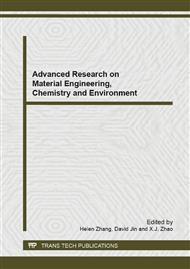p.27
p.31
p.34
p.38
p.43
p.48
p.52
p.57
p.61
Coupling Numerical Simulation of Resin Matrix Composites about Temperature and Degree of Cure Fields by Hot-Press Forming
Abstract:
In this paper, a coupled numerical model of three-dimensional transient temperature field and degree of cure field for resin matrix composite curing process was developed. Using this model the hot-press curing process of the plate-shaped composite parts were simulated with considering the impact of tools and auxiliary materials. Thus, the temperature and degree of cure fields distribution in the entire process cycle were obtained. Numerical results show that the curing of the composite has a certain sequence. At the beginning, the composite is first curing at the boundary and gradually to the center. At the end stage, because of the higher curing rate, the center released a large amount of heat which makes the boundary curing simultaneously with center. In addition, there is a significant exothermic peak during the curing process. And the peak temperature is higher when it was closer to the center. This research effectively provides reference for optimizing the heating process parameters to improve product quality.
Info:
Periodical:
Pages:
43-47
Citation:
Online since:
September 2013
Authors:
Keywords:
Price:
Сopyright:
© 2013 Trans Tech Publications Ltd. All Rights Reserved
Share:
Citation:


